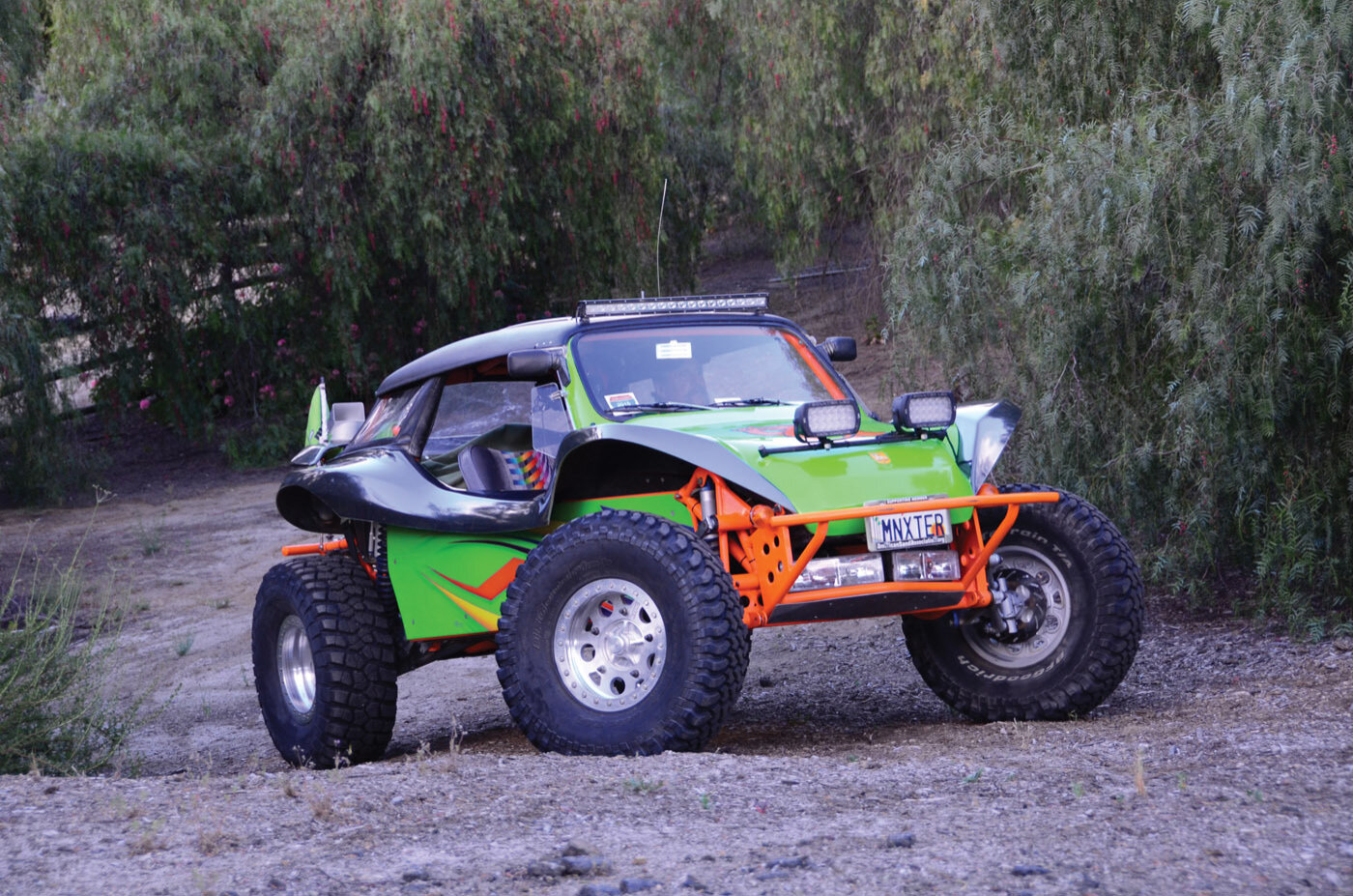
VW-powered Myers Manx DualSport
Story and photos by Steve Temple
It’s hard to imagine a sand-encrusted off-roader or admirer of VW Beetles who hasn’t heard of Bruce Meyers, the Mac Daddy of all dune buggies. The Meyers Manx is arguably one of the most significant vehicles of the last century, not only for its record-breaking achievements in the 1967 Baja 1000, but also for capturing the imagination of countless dune-chasing off-roaders (and several hundred copycat manufacturers, to boot). It’s far more than just a VW-based sandrail; it’s an icon, a cultural waypoint of the ’60s that captures the feel and look of a generation — a vehicular version of Beatles music and Peter Max art. An automotive journalist once referred to it as the automotive equivalent of a bikini.
Even though now in his 90s, Meyers is not content sitting still. In recent years, his fertile imagination spawned a neo/retro variant of the Manx called the Manxter. Instead of using a shortened VW pan, the Manxter has a full-length Beetle chassis, allowing for four seats instead of two.
More significantly, the air-cooled Type 1 engine is gone (or rather, used only on the base Manxter 2+2 now). Instead, a modern water-cooled,
turbocharged Subaru WRX engine hangs off the back end. (Except for some VW diehards such as Mark Miller, the owner of the DualSport shown here, which we’ll get to in a moment.)
Meyers is not content to simply rehash an old idea. The Manxter takes the Manx to a new level of performance, using modern mechanicals, such as the long-arm off-road suspension (on the DualSport version shown here) and a Subbie engine. The latter is typically mated to an upgraded VW Type 1 transaxle or a stock Type II with a Kennedy adaptor.
True to its name, this model is for the serious off-road enthusiast, but with street-legal amenities. Inspired by the Manxter Baja 1000 Racer, the DualSport features an optional tube chassis, and its roof-support system and body have been modified to accommodate long-travel shocks. Suspension travel is increased to a full foot in the front and 15-plus inches in the rear. Custom 3-by-3-inch trailing arms make up the rear suspension while a coilover long-travel front trailing arm system is used up front. A custom tubular subframe results in a 100-inch wheelbase, 6 inches longer than a standard VW chassis.
Traditionalists like Mark Miller can still use a VW Type 1 engine, though, to which he added both a turbo and NOS, for a healthier wallop of power. Even more interesting is his background history with Meyers, since they happen to live just a few miles from each other in SoCal.
Miller had a ’65 VW Beetle on his property, doing nothing, and one day Meyers came into his store, and they got to talking. One thing led to another, and he initially decided to build a Manxter.
“The DualSport came after because of a need for more speed,” he relates (you’ll see why from the other cars he’s built, noted below).
Miller has been a member of the Manx Club since 2003, when he purchased his yellow Manxter 2+2. That car was the subject of a piece I wrote for Hot Rod magazine several years ago. Bruce and I reenacted a cover shoot from the ’60s showing him jumping a Manx over a dune (one of the best-selling issues of Hot Rod ever published, by the way).
Turns out the Manxter landed pretty hard (“Like a can full of bolts,” Bruce Meyers admitted to me later), so when Miller found out that the DualSport felt like a creampuff after coming off a bump, he promptly sold the yellow Manxter to a Manx Club member who sent it to Dubai on a business venture, where it never returned from and was “lost” forever.
He then purchased his current kit, the lime-green DualSport, in 2005. This body originally was intended to be Bruce’s personal car, though the fiberglass shop declared that it was not perfect enough for him. Thus considering it a “blem” (blemished body), Miller purchased it at a reduced price, though he never could find said indiscretions on the body during the year-long buildup.
Indeed, Miller has won a multitude of ribbons and plaques at the Manx Club Show-N-Shines over the years. Wanting to keep busy in his shop at home, he also has built a Harley-Davidson motorcycle and a Shell Valley Cobra replica (which we’ll get to in a later issue). More recently, Miller restored a Comet which he has started racing. (Hence the need for a high-performance Manxter.)
So how does Miller feel about his DualSport? He says it has a smooth and stable ride in rough terrain, and is less skittish and more predictable than the early Manx.
For creative geniuses like Bruce Meyers, the sun never sets. They just disappear into the desert with a cloud of dust trailing behind.

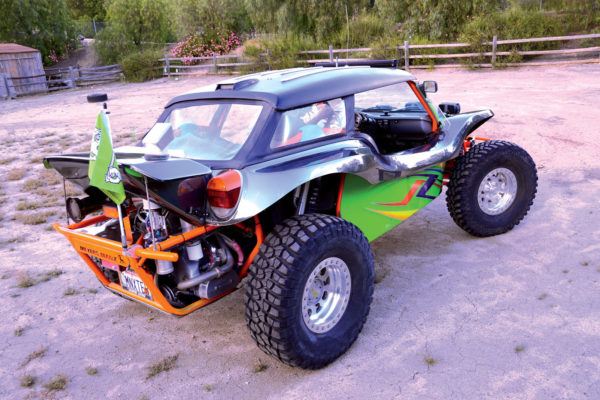
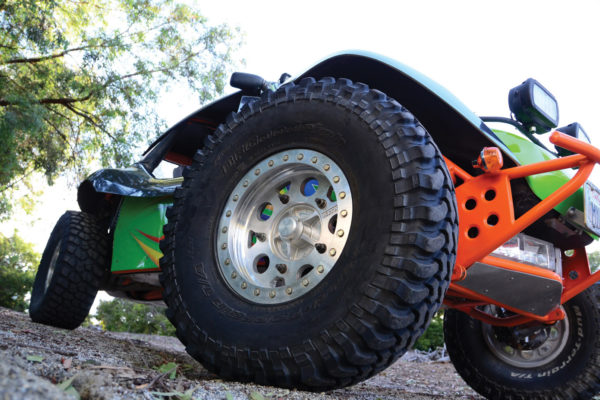
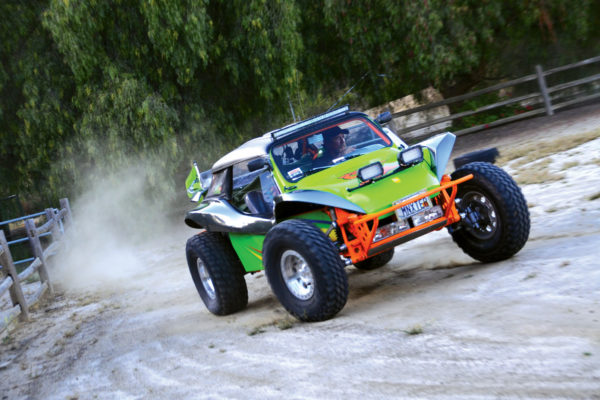
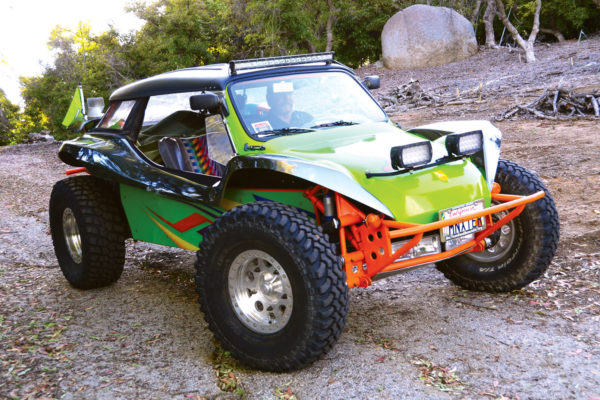
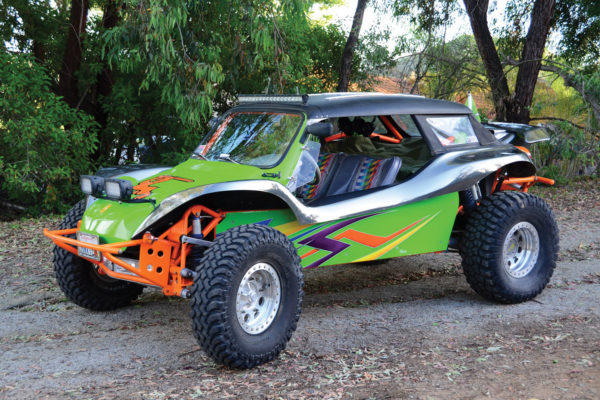
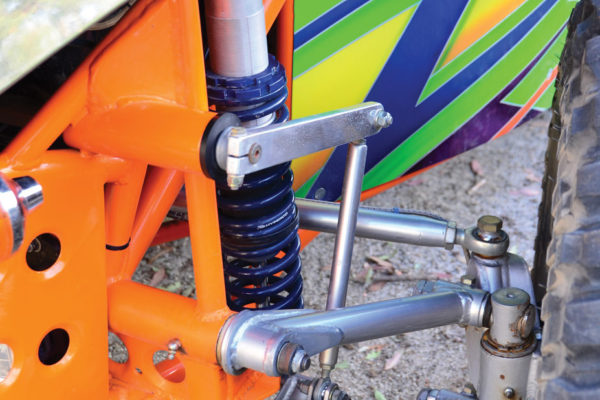
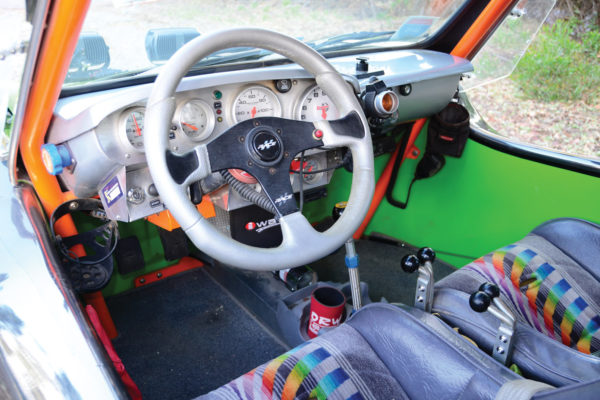
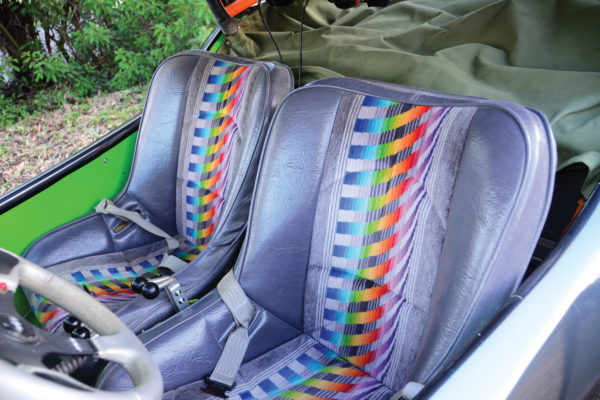
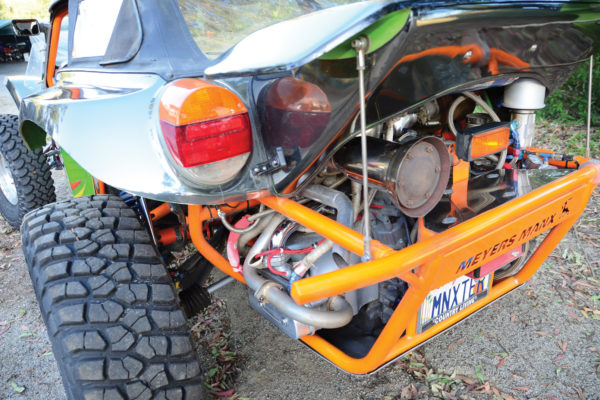
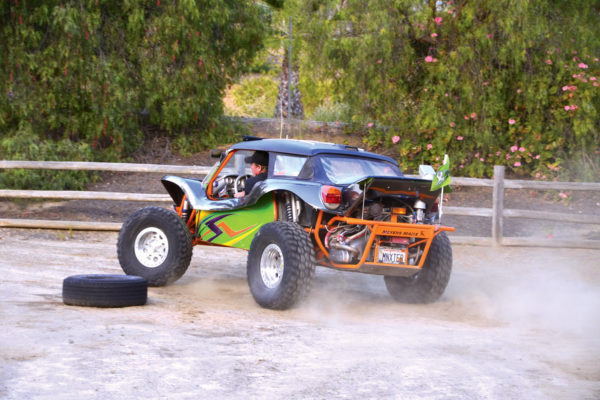
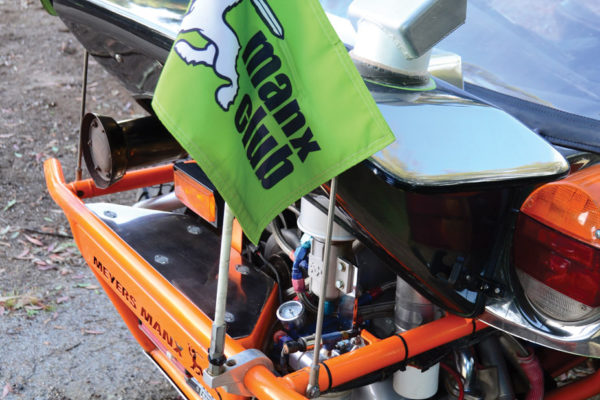
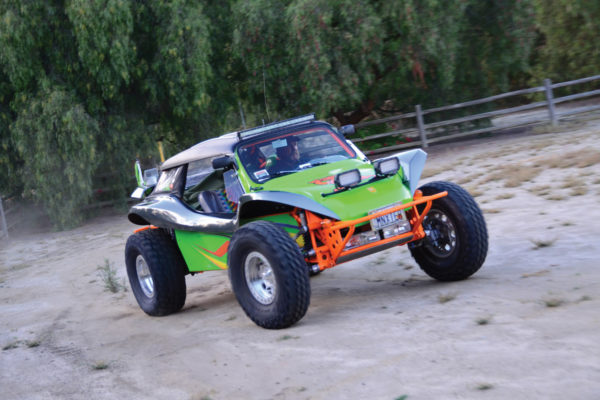
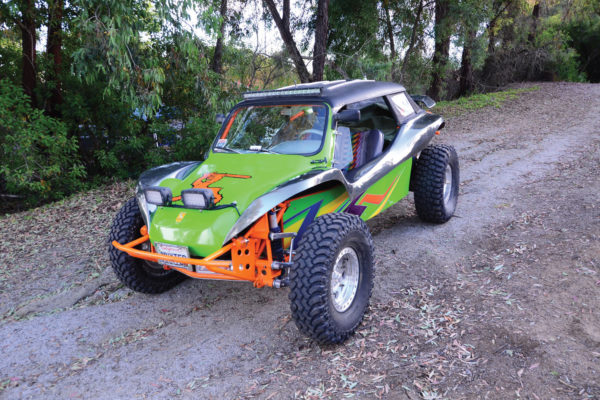
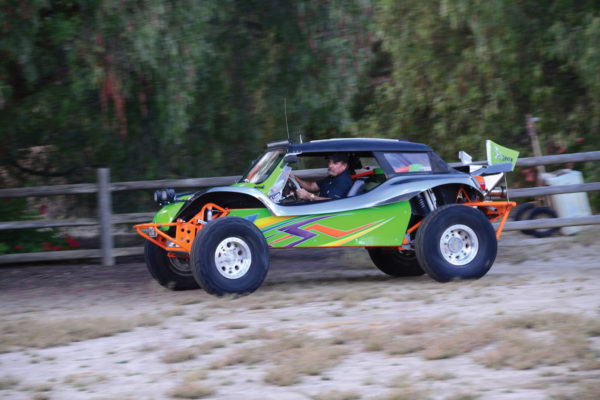
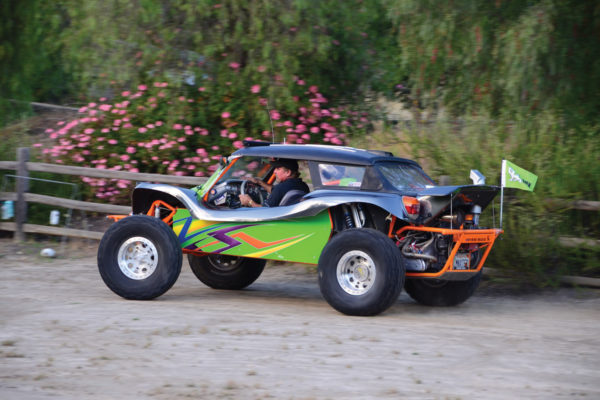
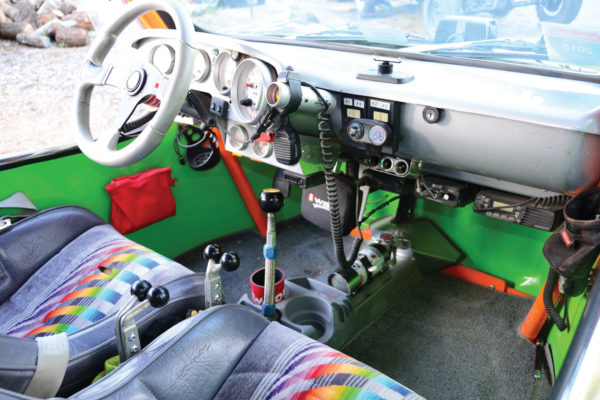
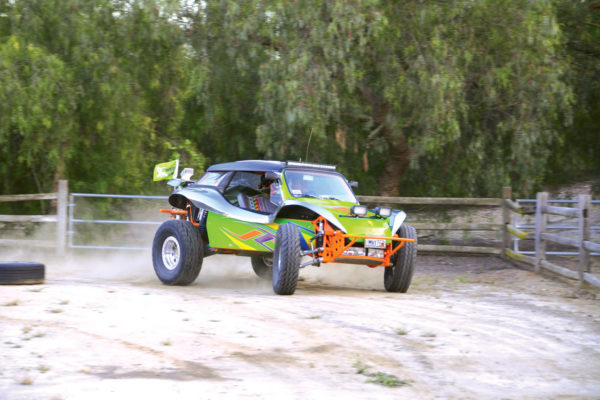
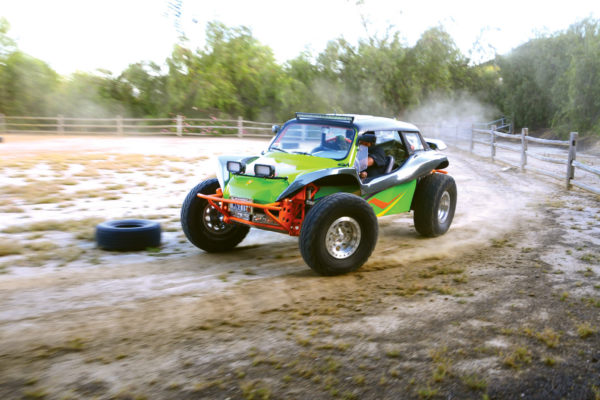
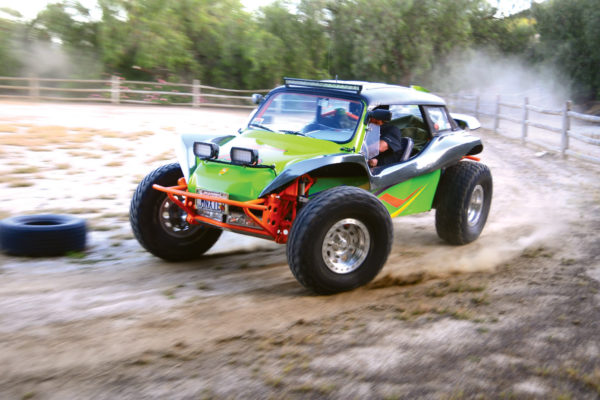
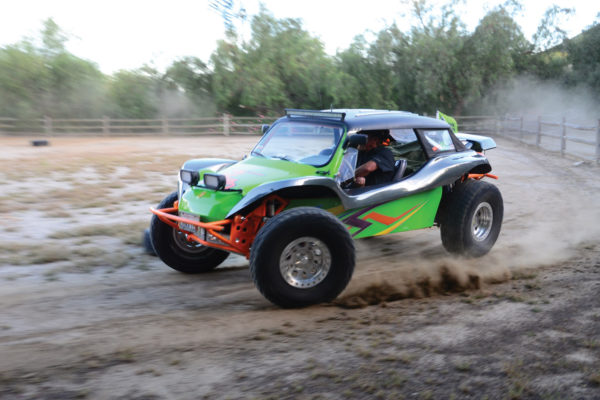
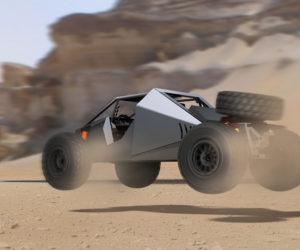
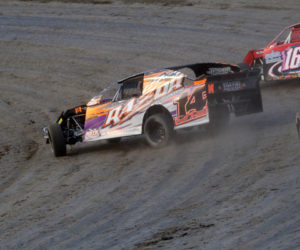
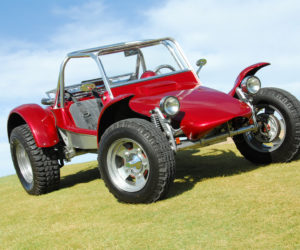
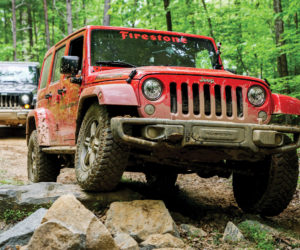
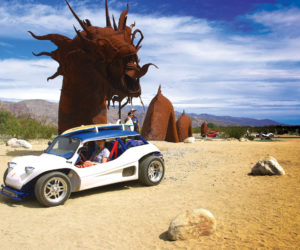
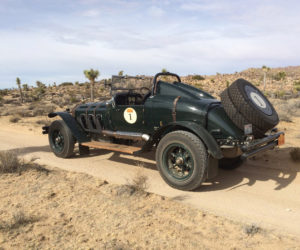




Comments for: Dualsport Manx
comments powered by Disqus